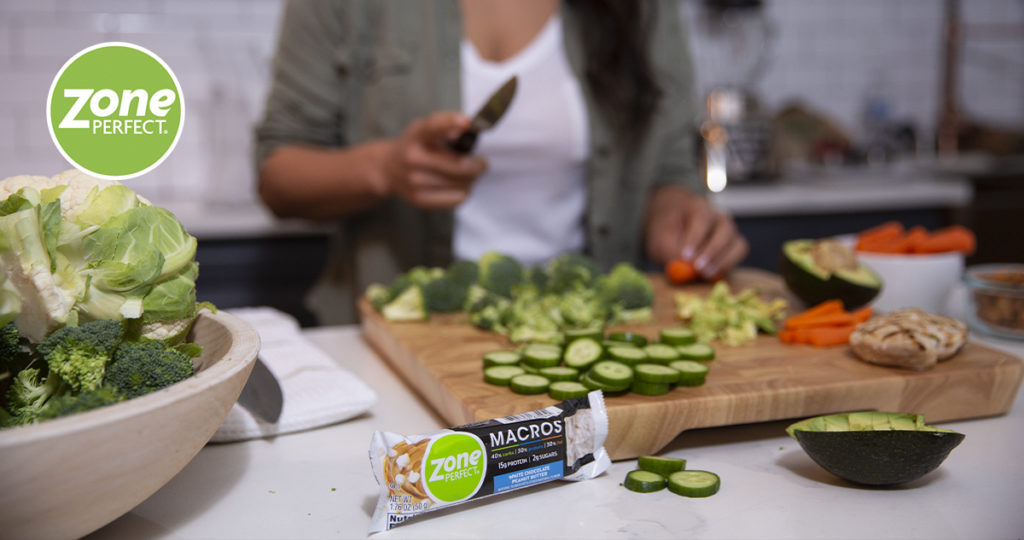Sponsored Content
The Science Behind 40/30/30
An expert’s take on why you might consider this macro mix the next time you’re in pursuit of the “perfect” diet.

As a nutrition expert with a passion for helping people reach their health, wellness, and weight goals, I am often asked, what’s the very best diet? And my answer is always, one that works for you. Despite what you may heard from influencers selling plans and supplements, or even the latest headline on your news feed, there is actually no one, best plan that works for Every. Single. Member of the population.
My response of “nutrition needs to be personalized” seems to bring about an eye roll and disappointment from the interviewer hoping I had a secret plan to share. As such, the next question is inevitably, “what diet do you follow”. While my personal intake fluxes with training and health goals, I can read the room and realize a more tangible recommendation is needed. Ultimately, I typically follow and recommend a 40/30/30 and here’s why…
The macronutrient mix of 40% of total calories from carbohydrate, 30% from protein, and 30% from fat has been examined often and across several populations, each time found to support improvements in overall health, body composition, and wellness. By definition, a 40/30/30 plan is a low (or reduced) carbohydrate approach. This is based upon the guidelines set forth by the Institute of Medicine of the National Academies and known as the Acceptable Macronutrient Distribution Range (AMDR). AMDRs are science-based macronutrient intake ranges established to help reduce risk of chronic disease and allow for adequate intake of essential nutrients. The AMDR for carbohydrate is 45–65% of daily calories so technically a 40/30/30 plan is considered low carb. For perspective, the AMDR for protein is 10-30% of total calories and the AMDR for fat is 20-35% of total calories. When compared to general nutrition intake and these recommendations, 40/30/30 prescribes a lowish intake of carbs, highish intake of protein, and a balanced intake of fat. This blend is a natural fit for wellness warriors and fitness enthusiasts in need of endogenous glycogen to support activity, requiring protein for recovery and satiety, and wanting fat for nourishment.
For general health and wellness, the dynamics of the plan allow for a variety of nutrient-dense foods to grace the plate, thereby promoting micronutrient intake as well as promoting better adherence as shown in many long-term studies. An increase in calories sourced from thermogenic, satiating protein concurrently facilitates a reduction in total calorie intake – generally necessary anytime weight loss is warranted- and further drives improvements in body mass index, along with defense of lean body mass and improvements in body composition. Layman and colleagues studied the impact of two isoenergetic weight loss diets with modified carbohydrate: protein ratios on body composition and blood lipid levels. While the high carb diet group consumed 68g protein/day and a macro mix of 58% carb, 16% protein, and 26% fat, the high protein group consumed 125g PRO/d and a macro mix of 41/30/29. After 10 weeks of highly controlled diet, weight loss was similar with higher carb group losing ~15lbs and the higher protein group losing ~16.5lbs. However, weight loss in the protein group was partitioned to significantly higher loss of fat; in other words, more lean tissue was spared. In addition, subjects in the higher protein group expressed a feeling of more energy, greater satiety, and improved glucose homeostasis in the hours following a higher protein macro mix. Other studies have found that 40/30/30 plans compared to higher carb approaches and even very low carb keto approaches drive better health outcomes as well as improvements in resting energy expenditure even after weight loss (which is rare since usually weight loss drives down REE), but like most any calorie-reduced plan, can lead to weight loss.
For your clients searching for a plan that supports weight loss without deprivation, need something easy to adhere to and enjoy, the focus should be about what is on the plate versus what’s not included. Therein lies the beauty of 40/30/30. At the end of the day, this plan doesn’t include too many “off limit” choices. Instead, it allows for a moderate intake of whole grains, fruit, and vegetables, a generous intake of lean protein from poultry, seafood, eggs, dairy, vegetables, and other favorites, a moderate intake of heart healthy fats (think unsaturated fats and omega 3 fatty acids) from plant oils, nuts, avocados, and fish. For those looking to stay on track and who thrive under the ability to fit in a daily indulgence or two, 40/30/30 is prized for its blend of flexibility and nutrition guardrails. It’s an easy macro mix to track – and hit!- even for those who are new to meal prep and plate design. And when health and wellness are the ultimate goal, this pattern of eating supports physiological needs, performance desires, and ultimately helps map out a path towards best health and best self.






